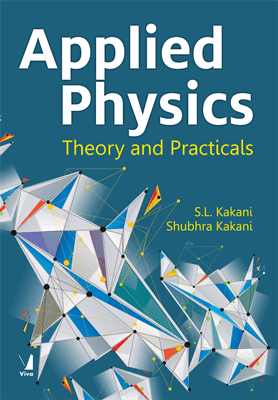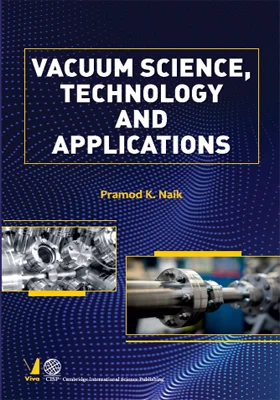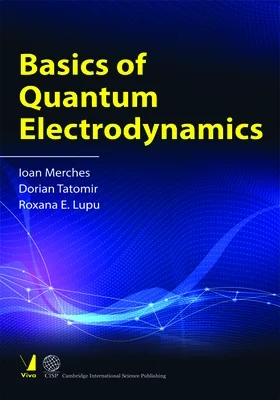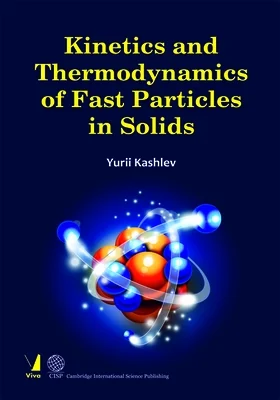Applied Physics
Applied Physics
Theory and Practicals
₹1,435.50 ₹1,595.00 Save: ₹159.50 (10%)
Go to cartISBN: 9788130924892
Bind: Paperback
Year: 2014
Pages: 1208
Size: 172 x 242 mm
Publisher: Viva Books Originals
Sales Territory: Worldwide
Description:
Written according to the latest curriculum of the AlCTE and other boards of technical education of various states, this book is also useful for the students of class XI and XII, B.Tech. and students preparing for IIT-JEE, engineering, medical and other entrance examinations.
A good number of typical problems are solved and provided in each chapter to illustrate and supplement the text besides summaries, review questions and problems. A large number of short-answer questions and objective questions with answers are given to meet the requirements of IIT-JEE, engineering, medical and various other entrance examinations. Also included in the book are chapters on optical fibres, lasers, superconductivity, energy sources, the environment, etc. The pedagogical skill of the authors makes the presentation of the text extremely clear and comprehensive.
Target Audience:
Students of physics.
Contents:
Chapter 1: Units and Dimensions • Introduction • Rules for Writing Units • Systems of Units • Definitions of Fundamental (Base) Units • Some Important Practical Units • Fundamental and Derived Units • Dimensions of a Physical Quantity • Principle of Homogeneity of Dimensions • Uses of Dimensional Equations • Limitations of Dimensional Analysis
Chapter 2: Vectors • Introduction • Representation of Vectors • Kinds of Vectors • Combination of Vectors • Components of a Vector • Multiplication of Vectors • Vector Product in Terms of Components • Triple Vector Product
Chapter 3: Force and Motion • Introduction • Unit of Force • Graphical Representation of a Force • Net or Resultant Force • Triangle Law of Forces • Equilibrium of Forces, Lami's Theorem • Parallelogram Law of Forces • Polygon Law of Forces • Resolution of Forces • Direct Measurement of Force • Rest and Motion • Basic Concepts • Newton's Laws of Motion • Conservation of Momentum • Impulse • Force of Friction
Chapter 4: Motion in Two Dimensions: Circular Motion and Projectile Motion • Introduction • Uniform Circular Motion • Inertial, Non-inertial Frames and Centrifugal Force • Projectile Motion • Projectile Motion on an Inclined Plane • Change of Frame (Relative Velocity)
Chapter 5: Work, Energy, Power and Energy Sources • Introduction • Work, Energy • Power • Energy Transformations • Energy Sources • Nuclear or Atomic Energy • Energy Crisis • Energy Conservation and Energy Degradation • Mass Energy Equivalence
Chapter 6: Gravitation and Satellites • Introduction • Newton's Law of Gravitation • Gravity and Gravitation • Variation of Acceleration Due to Gravity • Gravitational Field • Gravitational Potential Energy • Gravitational Potential • Inertial and Gravitational Masses • Satellite Motion • Escape Velocity • Weight Lessness in a Satellite • Kepler's Laws
Chapter 7: Elasticity • Introduction • Some Definitions • Different Types of Co-Efficients of Elasticity • Relations Between Elastic Constants
Chapter 8: Fluids • Introduction • Important Characteristics of Fluids • Thrust and Pressure • Pressure Exerted by a Liquid Column • Atmospheric Pressure and Gauge Pressure • Absolute Pressure and Gauge Pressure • Pascal's Principle • Surface Tension • Molecular Theory of Surface Tension • Angle of Contact • Capillarity • Experimental Determination of Surface Tension • Surface Energy • Examples of Capillarity • Excess of Pressure • Viscosity • Flow of a Liquid Through a Capillary Tube • Terminal Velocity • Stoke's Law • Stream Line and Turbulent Flow • Equation of Continuity of Flow • Energy Possessed by an Ideal Liquid in Streamline Motion • Bernoulli's Theorem • Applications of Bernoulli's Theorem • Variation of Viscosity with Temperature and Pressure
Chapter 9: Temperature and its Measurement • Introduction • Scale of Temperature • The Standard Scale (Ideal Gas Temperature Scale) • Absolute Scale of Temperature • Constant-Volume Hydrogen Thermometer • Platinum Resistance Thermometer • Thermo-Electric Thermometer • Other Thermometers • International Temperature Scale on 1990 (ITS-90) • Commonly used Temperature Scales
Chapter 10: Transfer or Transmission of Heat • Introduction • Thermal Conductivity • Convection • Radiation • Absorbing, Reflecting and Transmitting Powers • Mono-chromatic or Spectral Absorptances (a.) • Prevost's Theory • Radiation Inside a Hollow Constant Temperature Enclosure • Perfect Black Body • Kirchhoff's Law • Stefan's Law • Distribution of Energy in the Spectrum of a Perfectly Black Body • Wien's Displacement Law • Newton's Law of Cooling
Chapter 11: Waves and Vibrations • Introduction • Types of Waves • General Characteristic of Waves • Simple Harmonic Motion (SHM) • Equation of Motion for a Simple Harmonic Motion • Phase Relation Between Velocity, Acceleration and Displacement • Simple Harmonic Motion as a Projection of Circular Motion • Energy Conservation in Simple Harmonic Motion • Angular Simple Harmonic Motion • Examples of Simple Harmonic Motion • Composite Spring Mass System (Motion of a Body Suspended by two Springs) • Oscillations of a Mass Suspended by Means of a Spring of Mass Ms (Mass of Spring is not Negligible) • Spring Mass System, when the Mass Rolls Without Slipping on a Horizontal Surface • Vibration of Cantilever (Beam Supported at one End) • Free, Forced and Resonant Vibrations • Relationship Among Wavelength (.), Frequency (.) and Velocity (v) of Waves • Sound and Light Waves
Chapter 12: Principles of Optics • Introduction • Reflection at Plane Surfaces • Reflection by a Plane Mirror • Spherical Mirror • Refraction • Lens • Formation of Images by Thin Lens • Ray Diagram to Locate the Image Formed by a Lens • Characteristics and Location of Images Formed by a Convex Lens • Characteristics and Location of Images Formed by a Concave Lens • Power of a Lens, Magnification and Determination of Focal Length of a Lens • Magnifying Glass or Simple Microscope • Compound Microscope • Astronomical Telescope • Terrestrial Telescope • Resolving Power of a Microscope and a Telescope • The Slide Projector
Chapter 13: Sound Waves • Introduction • Longitudinal Waves in Fluids (Sound Waves) • Velocity of a Sound Wave in a Medium • Factors Affecting the Velocity of Sound in Air • Principle of Superposition for Waves • Analytical Treatment of Stationary Waves • Interference • Beats • Reflection and Transmission of Waves • Stationary (Standing) Waves • Difference Between a Standing Wave and a Travelling Wave • ? Vibrations of String Fixed at Both Ends • Vibrations of Air Columns • Determination of Velocity of Sound
Chapter 14: Acoustics • Introduction • Architectural Acoustics • Reverbation • Absorption Coefficient • Acoustic Design • Acoustical Materials
Chapter 15: Ultrasonics • Introduction • Production of Ultrasonic Waves • Detection of Ultrasonics • Applied Physics • Properties of Ultrasonics • Applications of Ultrasonics • PZT (Lead-Zicronate-Titanate Base) Ceramics • Ultrasonic Transducer
Chapter 16: Electrostatics • Introduction • Electric Charge • Coulomb's Law • Electric Field • Electric Lines of Force • Electric Flux • Gauss's Law • Electric Potential • Electric Potential Energy • Capacitors • Capacitor (or Condenser) • Combination of Capacitors • Dielectrics and Their Behaviour in Electric Field • A Parallel Plate Capacitor with a Dielectric • Kirchhoff's Law for Capacitors • Charging and Discharging of a Capacitor Through Resistance • Corona Discharge
Chapter 17: Direct Current Electricity • Introduction • Electric Current • Current and Drift Velocity • Ohm's Law • Factors Affecting The Resistance: Resistivity • Current Density, Conductance and Conductivity • More About Current and Current Density • Common Commercial Resistors • Classification of Substances According to Their Resistivity • Variation of Resistivity with Temperature • Electric Power and Energy Transfer in an Electrical Circuit • Kirchhoff's Laws • Combination of Resistances • Grouping of Cells • Wheatstone's Bridge • Potentiometer • Measuring Instruments: Galvanometer, Ammeter and Voltmeter • Heating Effect of Electric Current
Chapter 18: Electromagnetic Induction • Introduction • Magnetic Flux • Electromagnetic Induction and Faraday's Laws of Electromagnetic Induction • Induced EMF in a Conducting Rod Moving in Uniform Magnetic Field (Motional EMF) • EMF Induced in a Conducting Rod Rotating in Magnetic Field • Energy Consideration • Induced Electric Field and Eddy Currents • Types of Electromagnetic Induction and Inductance
Chapter 19: Alternating Current (a.c.) Circuits • Introduction • Average and RMS (Root Mean Square) Values of Alternating Currents • Phase Relation Between Current and Voltage in a.c. Circuits • L-C-R Series Circuit and Resonance • Power in a.c. Circuit and Power Factor • Parallel Resonance Circuit (Rejector Circuit) • Transformer
Chapter 20: Semiconductor Physics • Introduction • Atomic Structure and Energy Level • Energy Band Theory • Energy Band Diagram in Solids • Classification of Solids into Conductors (Metals), Semiconductors and Insulators • Intrinsic Semiconductors • Extrinsic Semiconductors • Semiconductor Devices • Rectifiers • Zener Diodes • Constant Current Diode • Tunnel Diode • Transistor • Field Effect Transistor (FET) • Transistor Applications
Chapter 21: Photoelectric Effect • Introduction • Laws of Photoelectric Emission • Einstein's Equation and Explanation of the Laws • Photo-Cell • Applied Physics
Chapter 22: Lasers • Introduction • Important Properties of Laser Light • Einstein's Theory of Atomic Transitions and A and B Coefficients • Principle of Laser • Population Inversion by Pumping • Optical Resonators • Working of Laser • Varieties of Lasers • Applications of Lasers • Holography
Chapter 23: Optical Fibres • Introduction • Principle of Optical Guides • Optical Fibre • Classification of Fibres • Advantages of Optical Fibres • Losses in Optical Fibre Cable • Optical Fibre Communication System • Applications of Optical Fibres
Chapter 24: Superconductivity • Introduction • Superconducting Materials • Characteristic Properties of Superconductors • Thermodynamics of a Superconductor • Theory of Superconductivity • Applications of Superconductivity
Chapter 25: Nuclear Physics • Atomic Nucleus (The Nucleus as a Part of the Atom) • Atomic Number, Mass Number and Isotopes • Nuclear Binding Energy • Binding Energy • The Deutron (12H) • Radioactivity • Alpha, Beta and Gamma Decay • Nuclear Force • Stable Nuclei or Nuclear Stability • Nuclear Reactions and Q Value • Artificial Transmutation or Artificial Disintegration • Artificial Radioactivity • Nuclear Reactions • Nuclear Fission • Nuclear Reactor or Nuclear Pile • Nuclear Fusion or Thermo-Nuclear Reactions • Comparison Between Fission and Fusion
Chapter 26: Pollution and its Control • Introduction • Environment • Natural Resources • Environmental Pollution • Practicals: General Instructions • Experiments • Table • Logarithms • Suggested Readings
About the Authors:
Prof. Dr. S.L. Kakani, M.Sc. (Phys.), Ph.D., former Executive Director, Institute of Technology and Management, Bhilwara, is an internationally renowned physicist and has had a distinguished career spanning more than four decades of teaching, research and administration. He has authored several standard works. His two research monographs on superconductivity have been published by NOVA Science, New York, and recently four of his books have also been published by Anshan Ltd. UK. He has authored a large number of research papers in the fields of superconductivity, nanomaterials, condensed matter physics, material science, etc. He has supervised Ph.D. theses in the field of superconductivity and thin films.
Prof. Kakani served as the Chairman, BOS and Research Board, MDS University, Ajmer. He is Visiting Professor at several prestigious institutions. He has received several national and international awards and honours for his outstanding academic contributions and achievements. He is life member of IAPT, Vigyan Parishad and Hith-T update.
Dr. Mrs. Shubhra Kakani, M.Sc. (Phys.), Ph.D., received her M.Sc. in Physics and Ph.D. from MDS University. She has co-authored more than nine books namely: Problems on Advanced Quantum Physics, Thermal Physics, Superconductivity, Modern Physics, Nuclear and Particle Physics, Mechanics, Engineering Physics, A Textbook of Engineering Physics and ICSE Physics. Presently, she is pursuing post-doctoral research.







